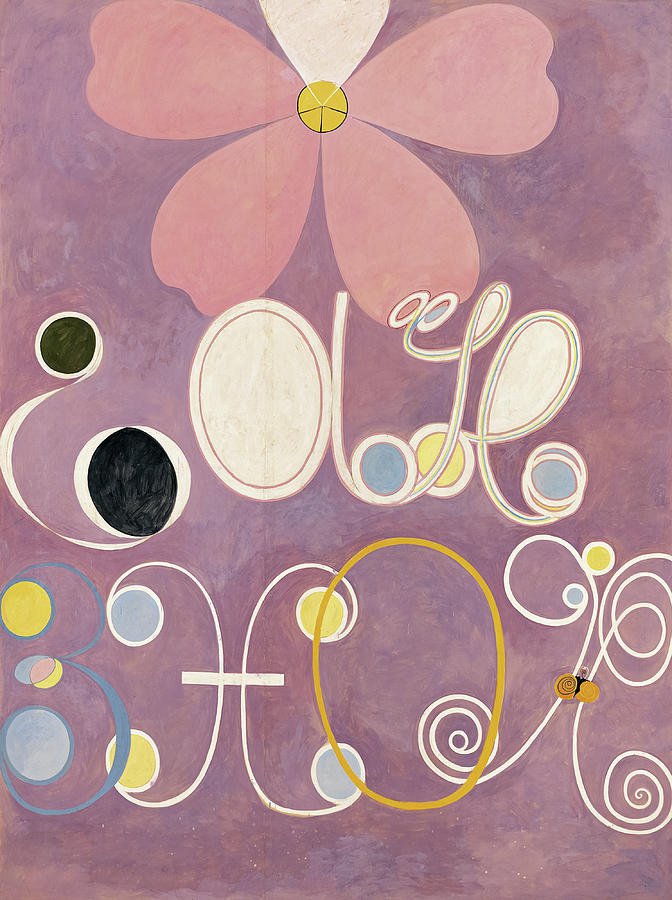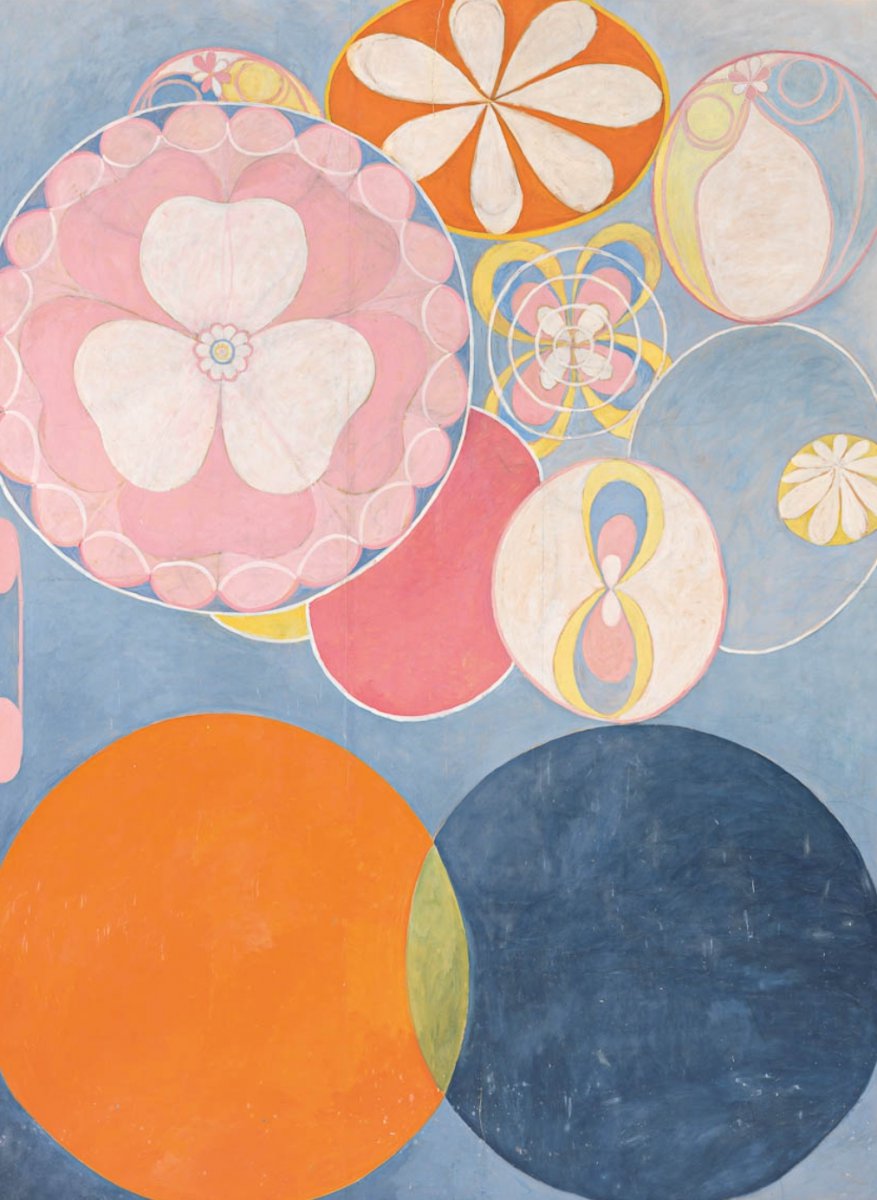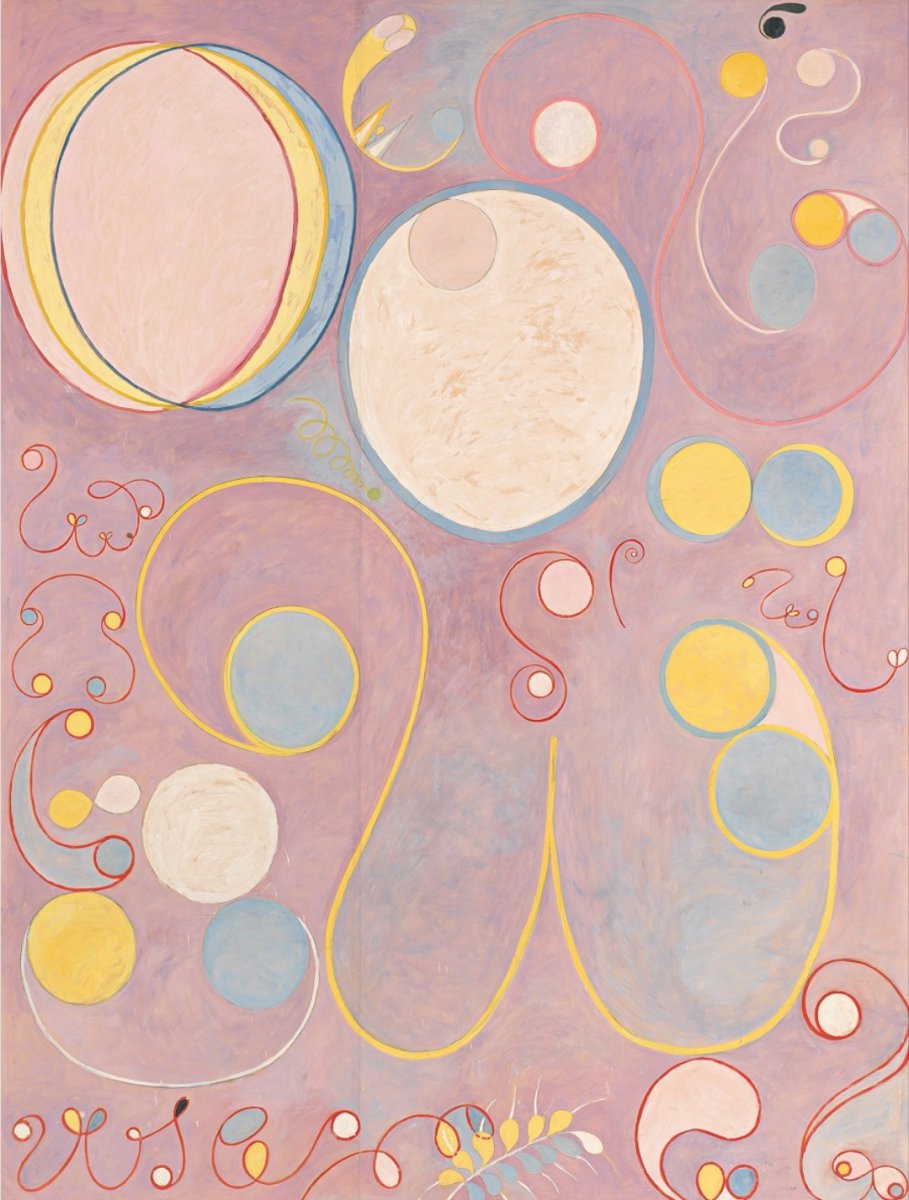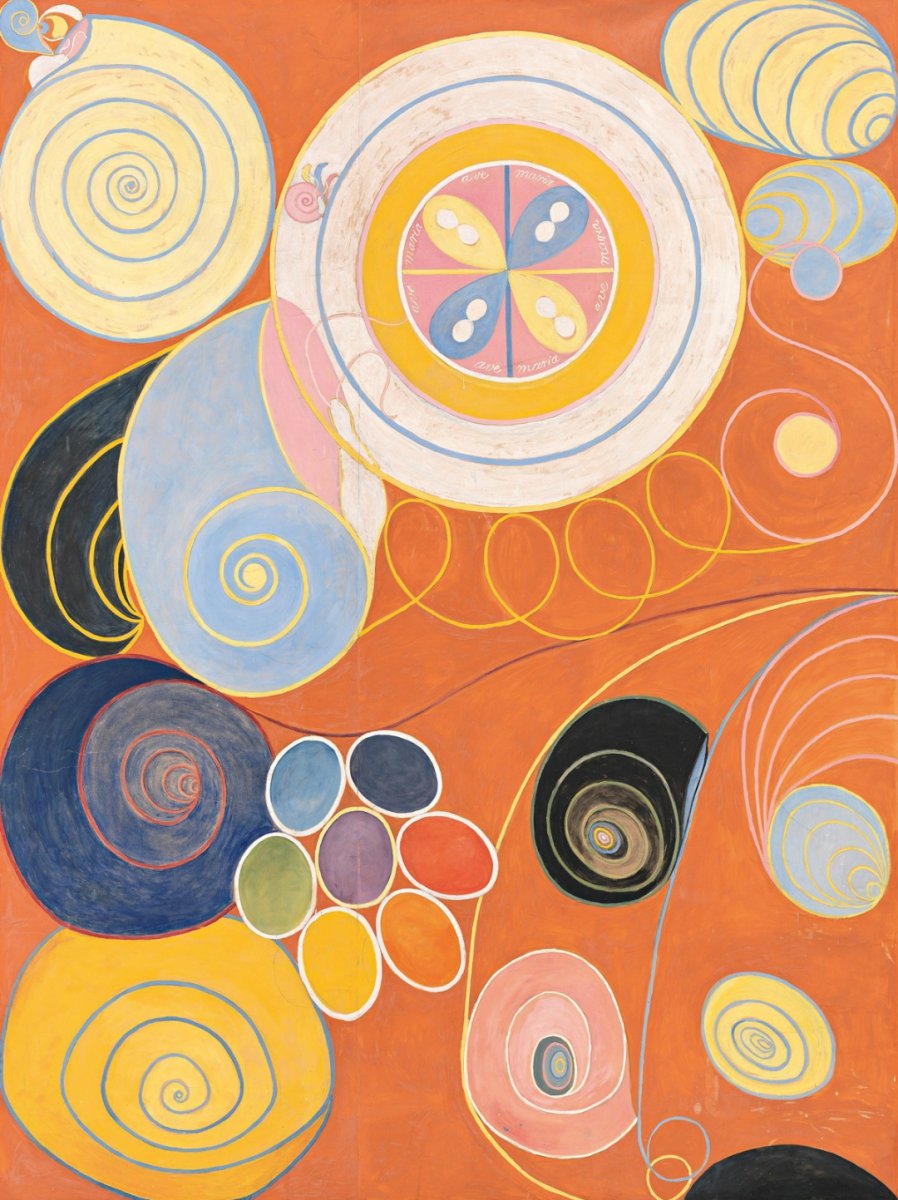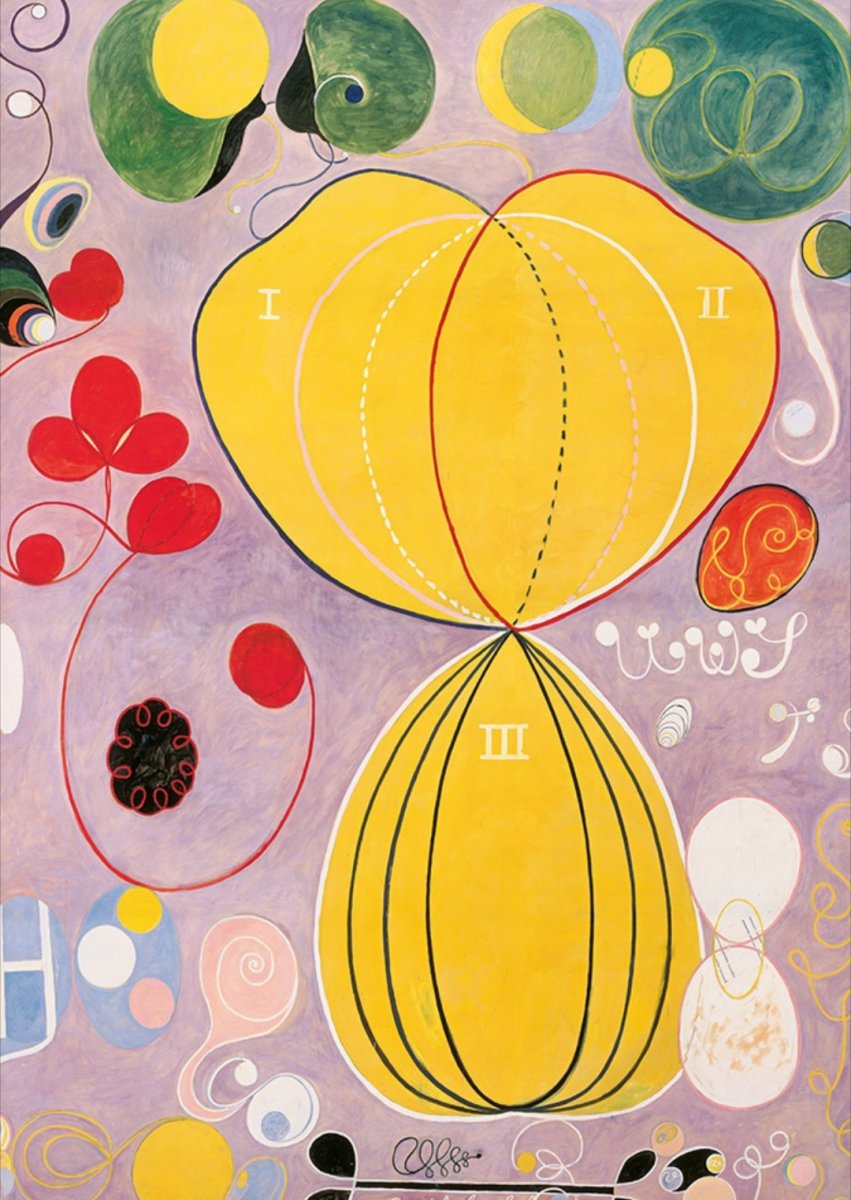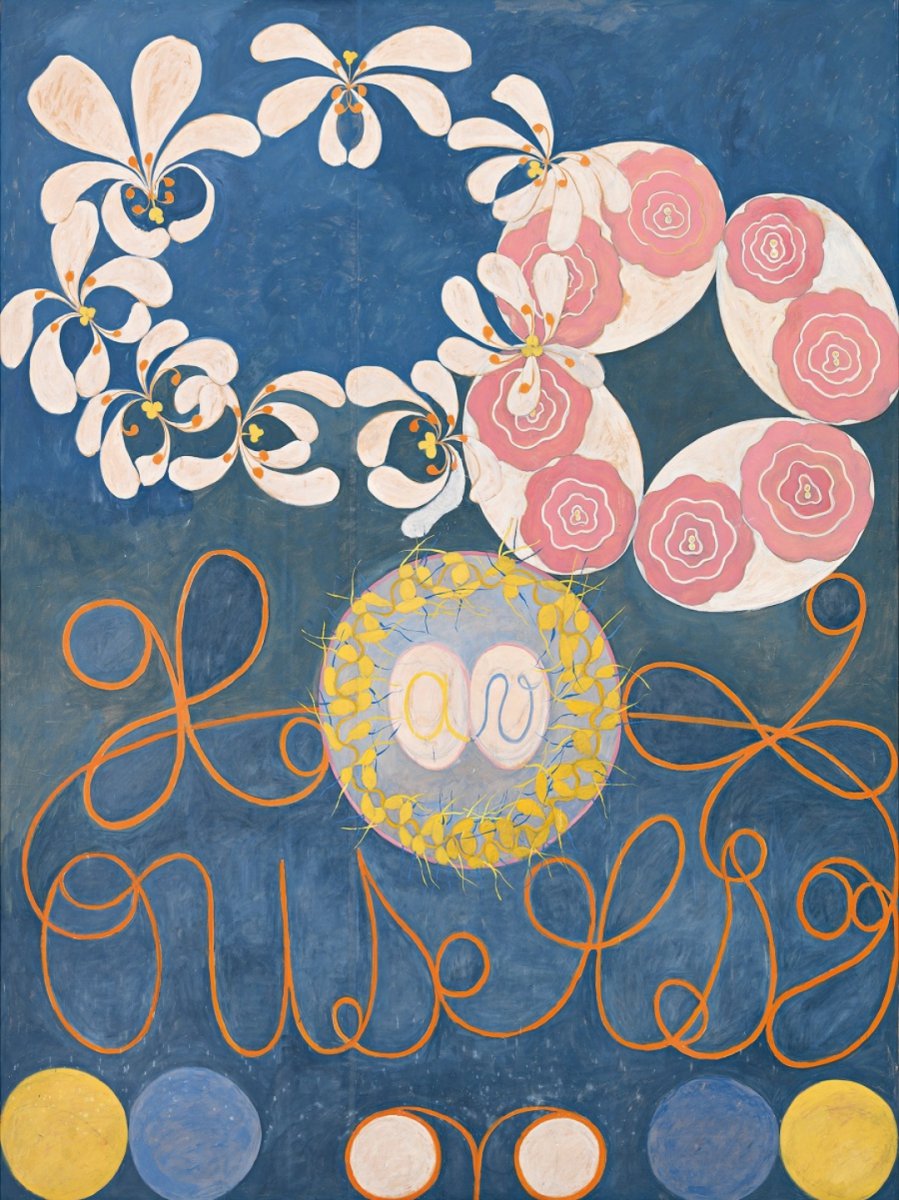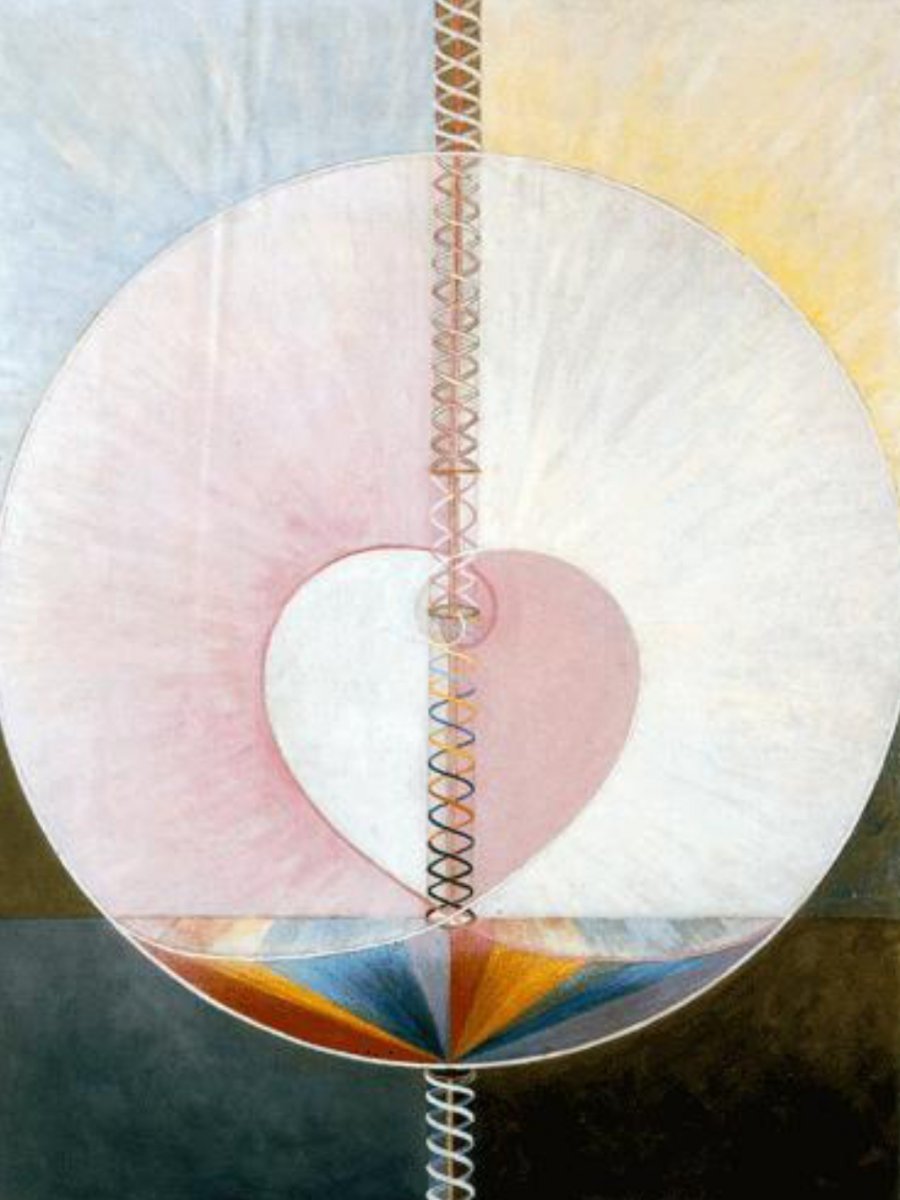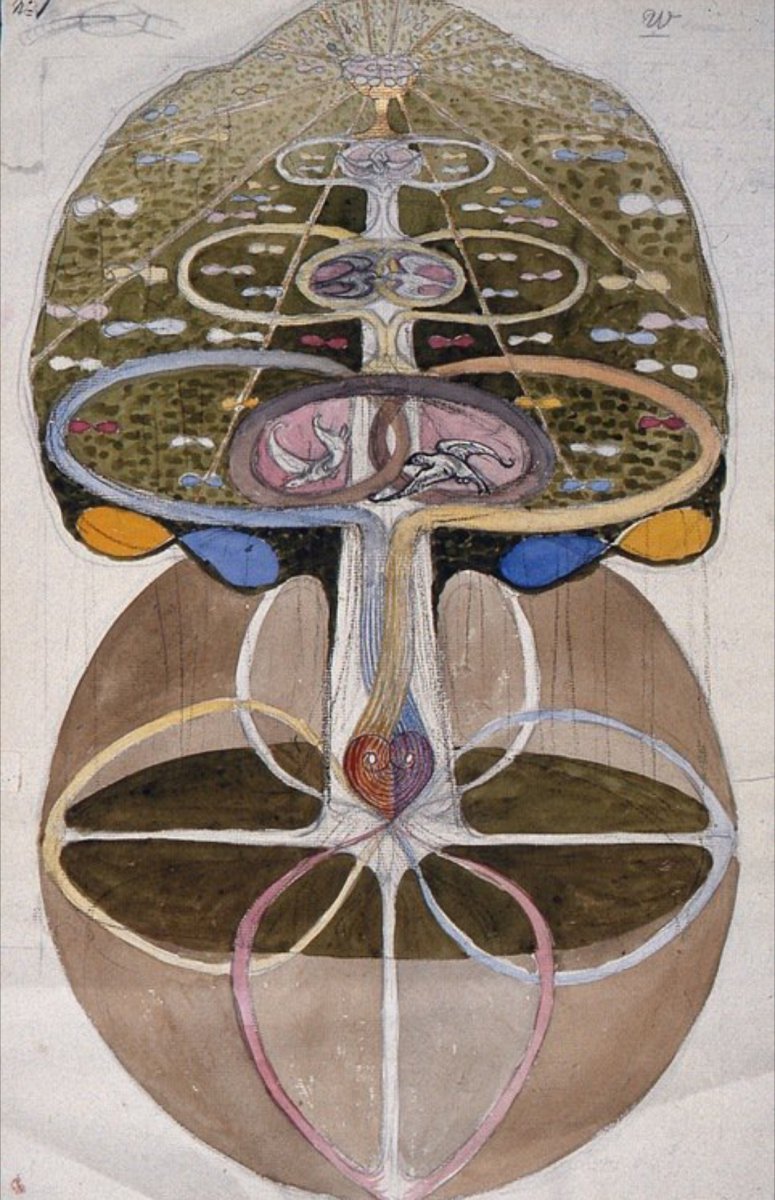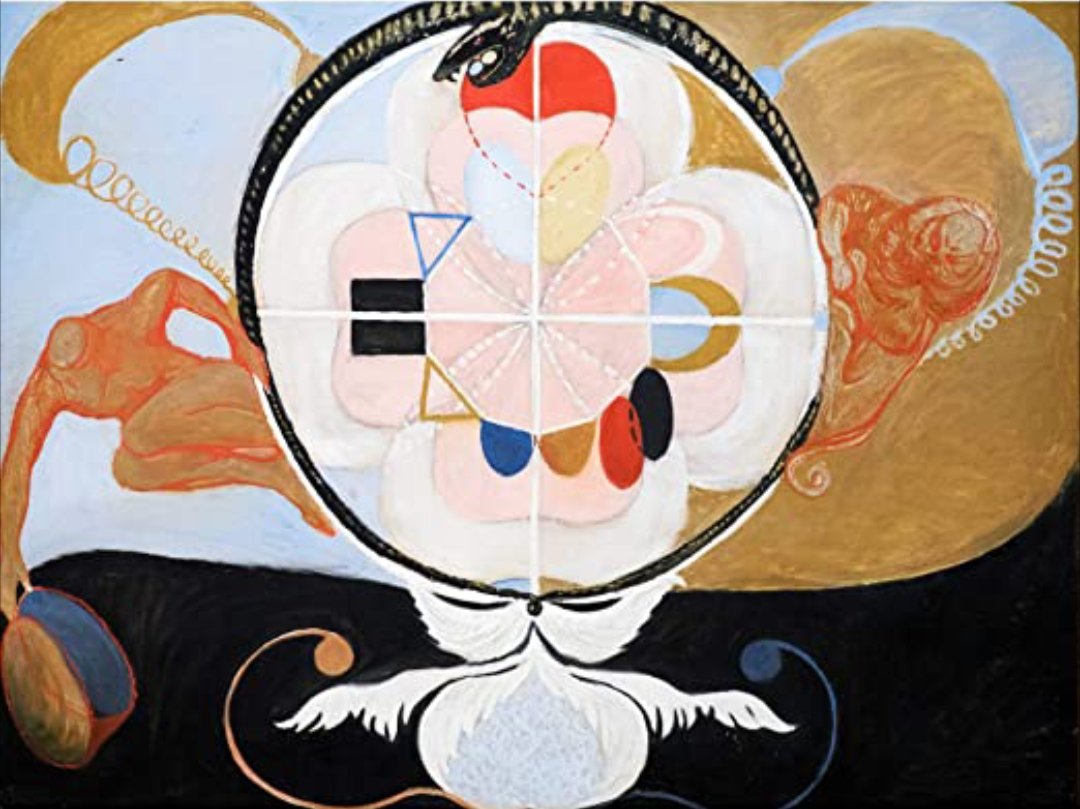
Search results for 'Hilma Af Klint' at the museum of art
Exhibitions
Hilma af Klint
Artists: Hilma Af Klint
Biography
Hilma af Klint (Swedish pronunciation: [ˈhɪ̂lːma ˈɑːv ˈklɪnːt]; October 26, 1862 – October 21, 1944) was a Swedish artist and mystic whose paintings were the first Western abstract art known to the current art community.A considerable body of her abstract work predates the first purely abstract compositions by Kandinsky.She belonged to a group called "The Five", a circle of women inspired by Theosophy who shared a belief in the importance of trying to contact the so-called "High Masters"—often by way of séances.Her paintings, which sometimes resemble diagrams, were a visual representation of complex spiritual ideas. She was the fourth child of Mathilda af Klint (née Sonntag) and Captain Victor af Klint, a Swedish naval commander. Hilma af Klint spent summers with her family at their manor Hanmora on the island of Adelsö in Lake Mälaren. In these idyllic surroundings she came into contact with nature at an early stage in her life. This deep association with natural forms was to be an inspiration in her work. Later in life, Hilma af Klint lived permanently on Munsö, an island next to Adelsö. From her family, Hilma af Klint inherited a great interest for mathematics and botany. She showed an early ability in visual art and, after the family moved to Stockholm, she studied at Tekniska skolan in Stockholm (Konstfack today), where she learned portraiture and landscape painting. She was admitted at the Royal Academy of Fine Arts at the age of twenty. During the years 1882–1887 she studied mainly drawing, portrait painting, and landscape painting. She graduated with honors and was allocated a scholarship in the form of a studio in the so-called "Atelier Building" (Ateljébyggnaden), owned by The Academy of Fine Arts between Hamngatan and Kungsträdgården in central Stockholm. This was the main cultural hub in the Swedish capital at that time. The same building also held Blanch's Café and Blanchs Art Gallery.
Spiritual and philosophical ideas
In 1880 her younger sister Hermina died, and it was at this time that the spiritual dimension of her life began to develop. Her interest in abstraction and symbolism came from Hilma af Klint's involvement in spiritism, very much in vogue at the end of the nineteenth and beginning of the twentieth century. Her experiments in spiritual investigation started in 1879.[5] She became interested in the Theosophy of Madame Blavatsky and the philosophy of Christian Rosencreutz. In 1908 she met Rudolf Steiner, the founder of the Anthroposophical Society, who was visiting Stockholm. Steiner introduced her to his own theories regarding the Arts, and would have some influence on her paintings later in life. Several years later, in 1920, she met him again at the Goetheanum in Dornach, Switzerland, the headquarters of the Anthroposophical Society. Between 1921 and 1930 she spent long periods at the Goetheanum. Af Klint's work can be understood in the wider context of the Modernist search for new forms in artistic, spiritual, political, and scientific systems at the beginning of the twentieth century.There was a similar interest in spirituality by other artists during this same period, including Wassily Kandinsky, Piet Mondrian, Kasimir Malevitch, and the French Nabis, in which many, like af Klint, were inspired by the Theosophical Movement.However, the artistic transition to abstract art and the nonfigurative painting of Hilma af Klint would occur without any contacts with the contemporary modern movements. The works of Hilma af Klint are mainly spiritual, and her artistic work is a consequence of this.
Work
At the Academy of Fine Arts she met Anna Cassel, the first of the four women with whom she later worked in "The Five" (De Fem), a group of artists who shared her ideas. The other members were Cornelia Cederberg, Sigrid Hedman, and Mathilda Nilsson. ''The Five'' began their association as members of the Edelweiss Society, which embraced a combination of the Theosophical teachings of Helena Blavatsky and spiritualism. All of The Five were interested in the paranormal and regularly organized spiritistic séances.They opened each meeting with a prayer, followed by a meditation, a Christian sermon, and a review and analysis of a text from the New Testament. This would be followed by a séance.They recorded in a book a completely new system of mystical thought, in the form of messages from higher spirits called The High Masters ("Höga Mästare"). One, Gregor, announced, "All the knowledge that is not of the senses, not of the intellect, not of the heart but is the property that exclusively belongs to the deepest aspect of your being...the knowledge of your spirit". Through her work with The Five, Hilma af Klint created experimental automatic drawing as early as 1896, leading her toward an inventive geometric visual language capable of conceptualizing invisible forces both of the inner and outer worlds.[citation needed] She explored world religions, atoms, and the plant world and wrote extensively about her discoveries.As she became more familiar with this form of expression, Hilma af Klint was assigned by the High Masters to create the paintings for the "Temple" – however she never understood what this "Temple" referred to. Hilma af Klint felt she was being directed by a force that would literally guide her hand. She wrote in her notebook: The pictures were painted directly through me, without any preliminary drawings, and with great force. I had no idea what the paintings were supposed to depict; nevertheless I worked swiftly and surely, without changing a single brush stro
Hilma af Klint (Swedish pronunciation: [ˈhɪ̂lːma ˈɑːv ˈklɪnːt]; October 26, 1862 – October 21, 1944) was a Swedish artist and mystic whose paintings were the first Western abstract art known to the current art community.A considerable body of her abstract work predates the first purely abstract compositions by Kandinsky.She belonged to a group called "The Five", a circle of women inspired by Theosophy who shared a belief in the importance of trying to contact the so-called "High Masters"—often by way of séances.Her paintings, which sometimes resemble diagrams, were a visual representation of complex spiritual ideas. She was the fourth child of Mathilda af Klint (née Sonntag) and Captain Victor af Klint, a Swedish naval commander. Hilma af Klint spent summers with her family at their manor Hanmora on the island of Adelsö in Lake Mälaren. In these idyllic surroundings she came into contact with nature at an early stage in her life. This deep association with natural forms was to be an inspiration in her work. Later in life, Hilma af Klint lived permanently on Munsö, an island next to Adelsö. From her family, Hilma af Klint inherited a great interest for mathematics and botany. She showed an early ability in visual art and, after the family moved to Stockholm, she studied at Tekniska skolan in Stockholm (Konstfack today), where she learned portraiture and landscape painting. She was admitted at the Royal Academy of Fine Arts at the age of twenty. During the years 1882–1887 she studied mainly drawing, portrait painting, and landscape painting. She graduated with honors and was allocated a scholarship in the form of a studio in the so-called "Atelier Building" (Ateljébyggnaden), owned by The Academy of Fine Arts between Hamngatan and Kungsträdgården in central Stockholm. This was the main cultural hub in the Swedish capital at that time. The same building also held Blanch's Café and Blanchs Art Gallery.
Spiritual and philosophical ideas
In 1880 her younger sister Hermina died, and it was at this time that the spiritual dimension of her life began to develop. Her interest in abstraction and symbolism came from Hilma af Klint's involvement in spiritism, very much in vogue at the end of the nineteenth and beginning of the twentieth century. Her experiments in spiritual investigation started in 1879.[5] She became interested in the Theosophy of Madame Blavatsky and the philosophy of Christian Rosencreutz. In 1908 she met Rudolf Steiner, the founder of the Anthroposophical Society, who was visiting Stockholm. Steiner introduced her to his own theories regarding the Arts, and would have some influence on her paintings later in life. Several years later, in 1920, she met him again at the Goetheanum in Dornach, Switzerland, the headquarters of the Anthroposophical Society. Between 1921 and 1930 she spent long periods at the Goetheanum. Af Klint's work can be understood in the wider context of the Modernist search for new forms in artistic, spiritual, political, and scientific systems at the beginning of the twentieth century.There was a similar interest in spirituality by other artists during this same period, including Wassily Kandinsky, Piet Mondrian, Kasimir Malevitch, and the French Nabis, in which many, like af Klint, were inspired by the Theosophical Movement.However, the artistic transition to abstract art and the nonfigurative painting of Hilma af Klint would occur without any contacts with the contemporary modern movements. The works of Hilma af Klint are mainly spiritual, and her artistic work is a consequence of this.
Work
At the Academy of Fine Arts she met Anna Cassel, the first of the four women with whom she later worked in "The Five" (De Fem), a group of artists who shared her ideas. The other members were Cornelia Cederberg, Sigrid Hedman, and Mathilda Nilsson. ''The Five'' began their association as members of the Edelweiss Society, which embraced a combination of the Theosophical teachings of Helena Blavatsky and spiritualism. All of The Five were interested in the paranormal and regularly organized spiritistic séances.They opened each meeting with a prayer, followed by a meditation, a Christian sermon, and a review and analysis of a text from the New Testament. This would be followed by a séance.They recorded in a book a completely new system of mystical thought, in the form of messages from higher spirits called The High Masters ("Höga Mästare"). One, Gregor, announced, "All the knowledge that is not of the senses, not of the intellect, not of the heart but is the property that exclusively belongs to the deepest aspect of your being...the knowledge of your spirit". Through her work with The Five, Hilma af Klint created experimental automatic drawing as early as 1896, leading her toward an inventive geometric visual language capable of conceptualizing invisible forces both of the inner and outer worlds.[citation needed] She explored world religions, atoms, and the plant world and wrote extensively about her discoveries.As she became more familiar with this form of expression, Hilma af Klint was assigned by the High Masters to create the paintings for the "Temple" – however she never understood what this "Temple" referred to. Hilma af Klint felt she was being directed by a force that would literally guide her hand. She wrote in her notebook: The pictures were painted directly through me, without any preliminary drawings, and with great force. I had no idea what the paintings were supposed to depict; nevertheless I worked swiftly and surely, without changing a single brush stro

